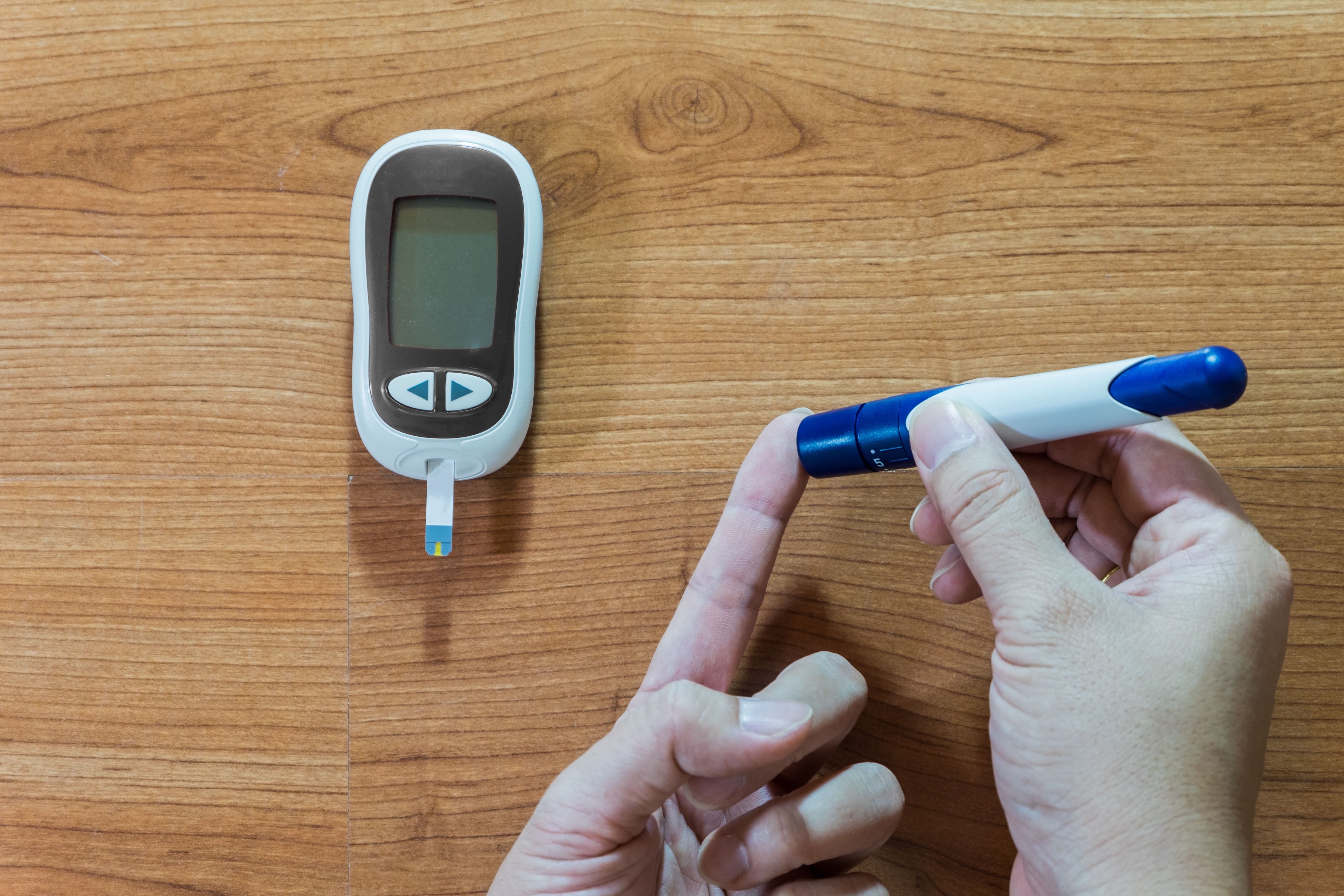Drawing into Bloodless Health Monitors

A team of scientists at the University of California, Berkeley developed a wearable sensor to monitor an individual’s health based upon their sweat. The sensor is constructed as a patch with a spiral-patterned microfluidic component where sweat samples can flow and be analyzed.[1] It has shown potential for monitoring sodium and fluid loss, and in some cases potassium.[1] The team would like to develop the technology into a bloodless glucose monitor.
Mallika Bariya, one of this study’s lead authors, told Berkeley News: “There’s been a lot of hope that non-invasive tests could replace blood-based measurements for diagnosing and monitoring diabetes patients, but we’ve shown that there isn’t a simple, universal correlation between sweat and blood glucose levels. This is important for the community to know, so that going forward we focus on investigating individualized or multi-parameter correlations.”[2]
Diabetic patients need to monitor their blood glucose at least every meal. Clinicians may even require more monitoring if needed, as frequent as 6-8 times or more per day.[3] This repeated lancing is painful and can risk tissue infection and damage.[4][5] These reasons may discourage consistent monitoring, resulting to a poorly managed diabetes—thus the continuing interest for non-invasive glucose test kits.[5] Apart from sweat, body fluids including saliva, tears, and urine were viewed as sources of glucose for non-invasive tests. A test strip for these samples, consisting of a polycarbonate track-etched (PCTE) membrane wicking layer to enhance the accuracy of glucose measurement, has been described in a patent but has yet to be seen in a practical application.[6]
In 1999, the US FDA approved the first non-invasive glucose meter but was later withdrawn due to poor performance and adverse skin irritation to the wearer.[7] No similar product has been approved since then. As a more plausible alternative, continuous glucose monitors were studied and developed. In 2018, the US FDA approved the first implantable wearable sensor that could be worn by a patient for up to 90 days.[8] While still an invasive procedure, it dramatically reduced the patient’s need to frequently lance his or her finger, and the risks associated with it.
Type 2 diabetes continues to be one of the world’s leading preventable diseases. There are 422 million cases of diabetes recorded worldwide with 100 million cases in the US alone.[9][10] Thus, developing an effective and working bloodless glucose meter would be rewarding to the millions of diabetic patients. With the rising popularity of smart wearables, such technology can be extended to other health parameters and can revolutionize the future of personal health monitoring.
References
[1] Nyein et al. (2019). Regional and correlative sweat analysis using high-throughput microfluidic sensing patches toward decoding sweat. Science Advances, 5(8), eaaw9906. Washington, DC: American Association for the Advancement of Science. doi: 10.1126/sciadv.aaw9906
[2] Manke, K. (2019, August 16). Wearable sensors detect what’s in your sweat. Berkeley News, Retrieved from https://news.berkeley.edu/
[3] ADA. (2013). Standards of Medical Care in Diabetes—2013. Diabetes Care, 36, S11-S66. Virginia: American Diabetes Association. doi: 10.2337/dc13-S011
[4] Heinemann, L. (2008). Finger Pricking and Pain: A Never Ending Story. J. Diabetes. Sci. Technol., 2(5), 919-921. Newbury Park: SAGE Publishing. doi: 10.1177/193229680800200526
[5] Gonzales, W.V., Mobashsher, A.T., & Abbosh, A. (2019). The Progress of Glucose Monitoring—A Review of Invasive to Minimally and Non-Invasive Techniques, Devices and Sensors. Sensors, 19(4), 800. Basel: MDPI. doi: 10.3390/s19040800
[6] Irina et al. (2012). US Patent No. US 2012/0165626 A1. Washington, DC: U.S. Patent and Trademark Office.
[7] Moser, E.G., Crew, L.B., & Garg, S.K. (2010). Role of continuous glucose monitoring in diabetes management. Avances en Diabetología, 26(2), 73-78. Amsterdam: Elsevier. doi: 10.1016/S1134-3230(10)62002-9
[8] FDA. (2018, June 21). FDA approves first continuous glucose monitoring system with a fully implantable glucose sensor and compatible mobile app for adults with diabetes [News Release]. Retrieved from https://www.fda.gov/news-events/fda-newsroom/press-announcements
[9] CDC. (2017, July 18). New CDC report: More than 100 million Americans have diabetes or prediabetes [Press Release]. Retrieved from https://www.cdc.gov/media/archives.htm
[10] WHO. (2018, October 30). Diabetes—Key Facts. Retrieved from https://www.who.int/news-room/fact-sheets/detail/diabetes
- Most Viewed Blog Articles (5)
- Company News (285)
- Emerging Technologies (64)
- Microbiology and Life Science News (93)
- Water and Fluid Separation News (97)
- Filtration Resources (93)
- Product News (19)


![Join Sterlitech at BIO 2024 [Booth #5558]: Exploring the Future of Biotechnology](https://www.sterlitech.com/media/blog/cache/300x200/magefan_blog/b4.jpeg)



